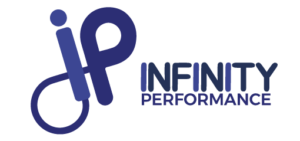
Understanding Programmatic vs. Direct Media Buying in Modern Marketing
In today’s world of marketing, there are two main ways to publish an advertisement: Direct and Programmatic.
Both are effective but serve different purposes in a media strategy.
In this blog, we will explore the definition of both methods, their advantages and disadvantages, and when to use each one.
What is Media Buying?
Media buying is the process of purchasing advertising space or time on various media channels to reach a target audience. This helps advertisers drive traffic to their websites.
There are many methods for ad placements, but in this blog, we’ll focus on two primary approaches:
Direct Media Buying.
Programmatic Media Buying.
What is the Difference Between Programmatic and Direct Media Buying?
Direct Media Buying
This is the traditional way of publishing ads. Advertisers contact publishers directly to negotiate ad placement. This often occurs in print media, television ads, and event sponsorships.
Programmatic Media Buying
An automated method of buying digital advertising space using software and algorithms. It relies on data insights to target the right audience. This makes it more precise, cost-effective, and performance-driven.

Advantages and Disadvantages of Each Method
Direct Media Buying
Advantages:
Access to Premium Inventory
Some publishers reserve their most valuable ad spots for direct deals, giving you better visibility.Non-Digital Opportunities
Unlike programmatic, direct buying lets you utilize physical ads such as billboards, print media, TV spots, and event sponsorships, increasing brand awareness.Customization
Direct buying offers more creative freedom regarding ad formats, sizes, and placements, allowing for more engaging campaigns.
Disadvantages:
Higher Cost
Premium placements often come with a higher price tag.Time-Consuming
It requires manual negotiations, which can take a lot of time and effort.No Real-Time Optimization
Once an ad is published, you can’t modify it, unlike programmatic methods.
Programmatic Media Buying
Advantages:
Improved Targeting
Allows advertisers to serve highly targeted ads, reducing waste and improving conversion rates.Real-Time Optimization
Campaigns can be adjusted instantly using live performance data for better ROI.
Disadvantages:
Ad Fraud
There is a risk that your ads may be shown to bots or fake users. It’s crucial to use fraud protection tools to ensure real engagement.Complexity
Programmatic requires a deep understanding of tools and platforms, which may be challenging for beginners.
Conclusion: Which One Should You Choose?
Direct media buying gives you more control, premium placement, and creative flexibility.
Programmatic media buying offers better targeting, real-time adjustments, and data-driven efficiency.
The choice depends on your campaign goals, budget, and the type of audience you want to reach.
